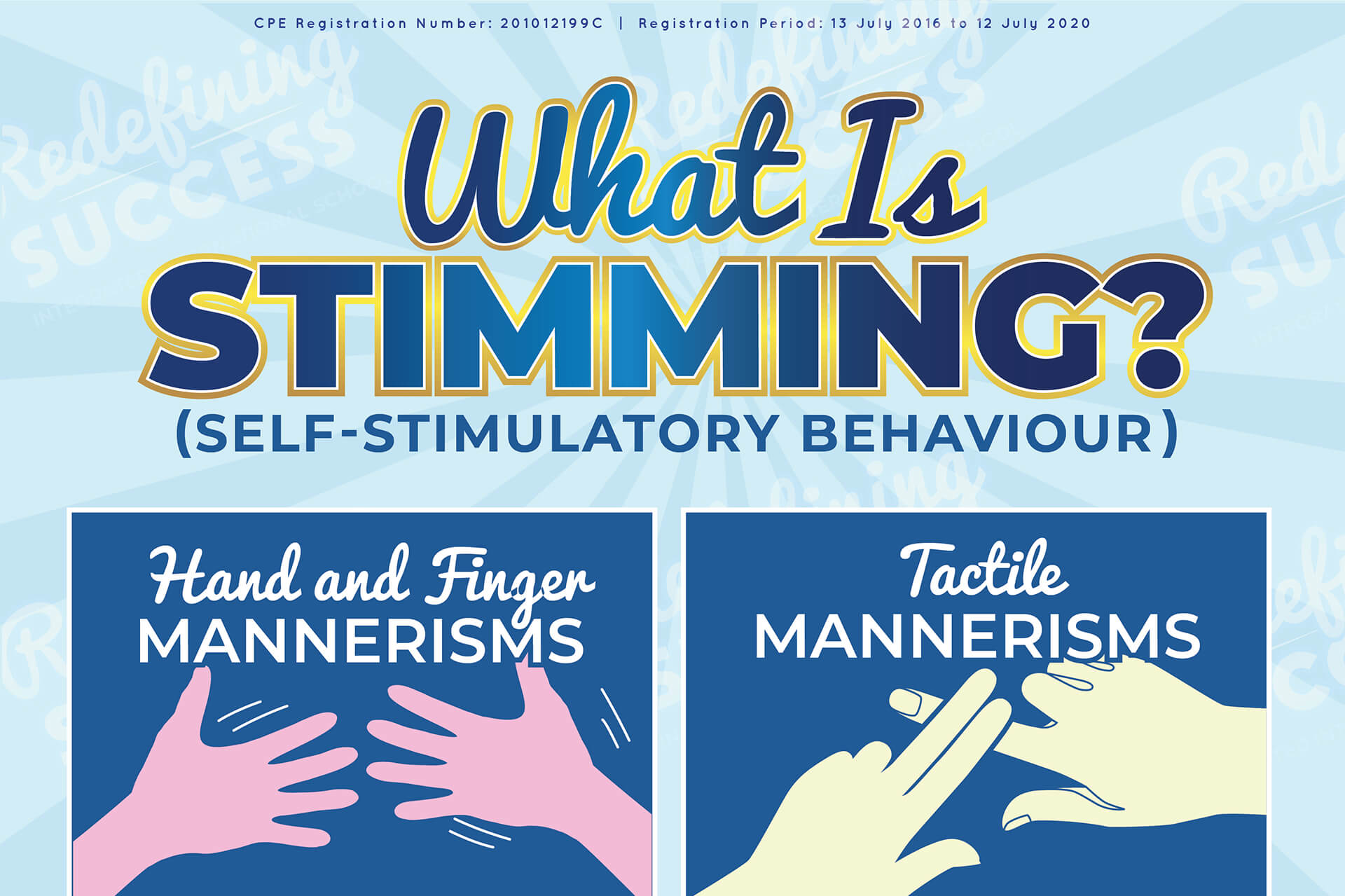Self-stimulatory behavior also known as stimming, is repetitive or unusual body movements and/or noises.
Most people tend to stim, for example, it may be that they play with their hair while talking to a friend or cracking their knuckles before a task. However, when stimming interferes with everyday activities and learning, it is often a symptom of Autism. Many children and teenagers with Autism Spectrum Disorder (ASD) stim and may continue to stim throughout their lives.
The amount and type of stimming varies a lot from individual to individual. For example, a child may just have mild hand mannerisms, whereas another may spend a lot of time stimming.
Take a look at our helpful special needs infographic to better understand this behaviour, you can download it here.
Find out more about our dedicated Support Services by clicking here.






